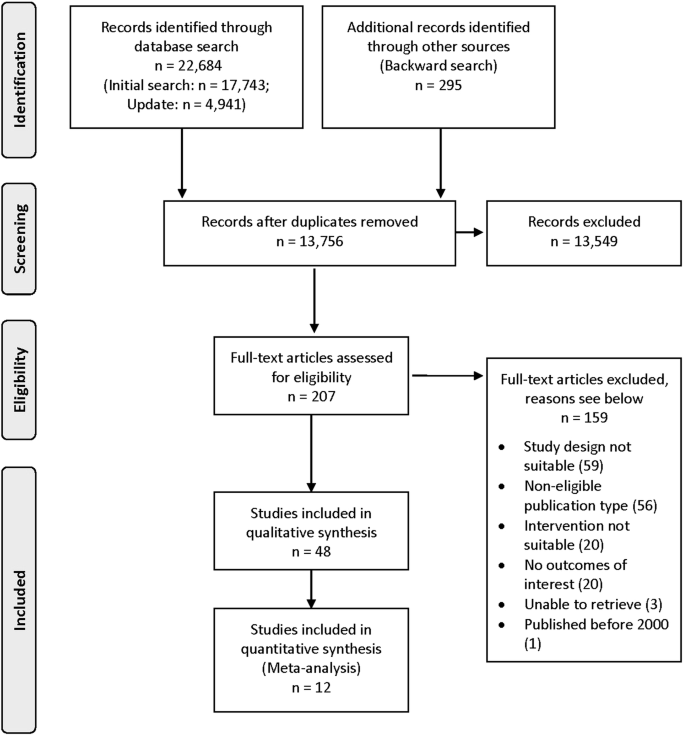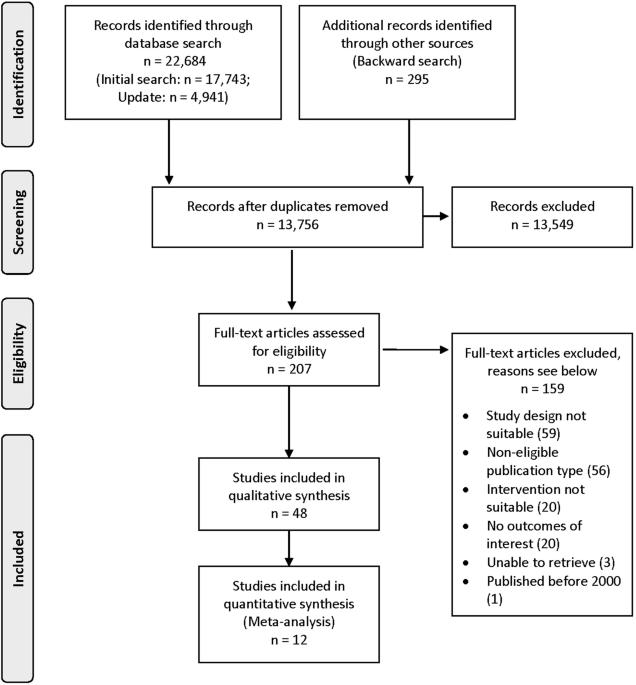Effects of artificial intelligence implementation on efficiency in medical imaging—a systematic literature review and meta-analysis
IF 15.1
1区 医学
Q1 HEALTH CARE SCIENCES & SERVICES
引用次数: 0
Abstract
In healthcare, integration of artificial intelligence (AI) holds strong promise for facilitating clinicians’ work, especially in clinical imaging. We aimed to assess the impact of AI implementation for medical imaging on efficiency in real-world clinical workflows and conducted a systematic review searching six medical databases. Two reviewers double-screened all records. Eligible records were evaluated for methodological quality. The outcomes of interest were workflow adaptation due to AI implementation, changes in time for tasks, and clinician workload. After screening 13,756 records, we identified 48 original studies to be incuded in the review. Thirty-three studies measured time for tasks, with 67% reporting reductions. Yet, three separate meta-analyses of 12 studies did not show significant effects after AI implementation. We identified five different workflows adapting to AI use. Most commonly, AI served as a secondary reader for detection tasks. Alternatively, AI was used as the primary reader for identifying positive cases, resulting in reorganizing worklists or issuing alerts. Only three studies scrutinized workload calculations based on the time saved through AI use. This systematic review and meta-analysis represents an assessment of the efficiency improvements offered by AI applications in real-world clinical imaging, predominantly revealing enhancements across the studies. However, considerable heterogeneity in available studies renders robust inferences regarding overall effectiveness in imaging tasks. Further work is needed on standardized reporting, evaluation of system integration, and real-world data collection to better understand the technological advances of AI in real-world healthcare workflows. Systematic review registration: Prospero ID CRD42022303439, International Registered Report Identifier (IRRID): RR2-10.2196/40485.


人工智能实施对医学成像效率的影响--系统性文献综述和荟萃分析。
在医疗保健领域,人工智能(AI)的整合为临床医生的工作提供了极大的便利,尤其是在临床成像方面。我们旨在评估医学影像领域实施人工智能对实际临床工作流程效率的影响,并对六个医学数据库进行了系统性检索。两名审稿人对所有记录进行了双重筛选。对符合条件的记录进行了方法学质量评估。我们关注的结果是人工智能实施带来的工作流程调整、任务时间的变化以及临床医生的工作量。在筛选了 13756 条记录后,我们确定了 48 项原创研究将纳入综述。有 33 项研究测量了任务时间,其中 67% 报告了任务时间的减少。然而,对 12 项研究进行的三项独立荟萃分析并未显示出实施人工智能后的显著效果。我们发现了五种适应人工智能使用的不同工作流程。最常见的是,人工智能作为检测任务的辅助阅读器。或者,人工智能被用作识别阳性病例的主要阅读器,从而导致重组工作列表或发出警报。只有三项研究根据使用人工智能节省的时间对工作量进行了仔细计算。本系统综述和荟萃分析对人工智能应用在实际临床成像中提高效率的情况进行了评估,主要揭示了各项研究中人工智能应用提高效率的情况。然而,现有研究中存在相当大的异质性,因此无法对成像任务的整体效果做出可靠的推断。要想更好地了解人工智能在真实世界医疗保健工作流程中的技术进步,还需要在标准化报告、系统集成评估和真实世界数据收集方面开展进一步的工作。系统综述注册:Prospero ID CRD42022303439,国际注册报告标识符(IRRID):RR2-10.2196/40485。
本文章由计算机程序翻译,如有差异,请以英文原文为准。
求助全文
约1分钟内获得全文
求助全文
来源期刊

NPJ Digital Medicine
Multiple-
CiteScore
25.10
自引率
3.30%
发文量
170
审稿时长
15 weeks
期刊介绍:
npj Digital Medicine is an online open-access journal that focuses on publishing peer-reviewed research in the field of digital medicine. The journal covers various aspects of digital medicine, including the application and implementation of digital and mobile technologies in clinical settings, virtual healthcare, and the use of artificial intelligence and informatics.
The primary goal of the journal is to support innovation and the advancement of healthcare through the integration of new digital and mobile technologies. When determining if a manuscript is suitable for publication, the journal considers four important criteria: novelty, clinical relevance, scientific rigor, and digital innovation.
 求助内容:
求助内容: 应助结果提醒方式:
应助结果提醒方式:


